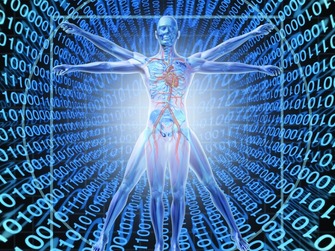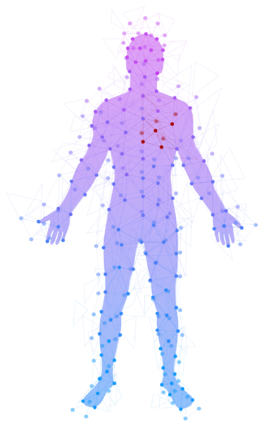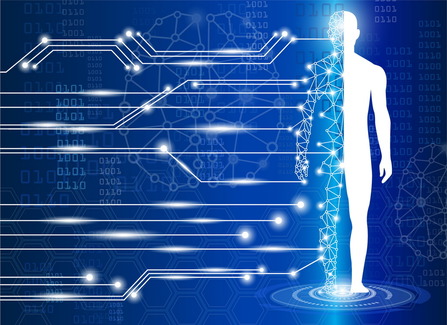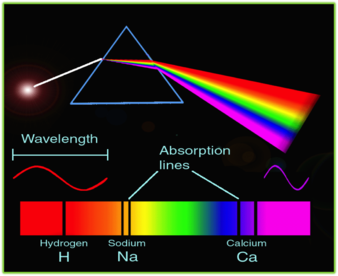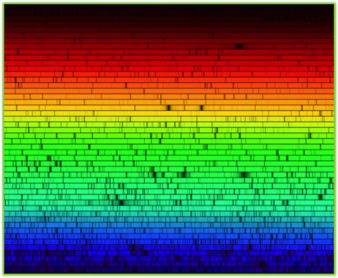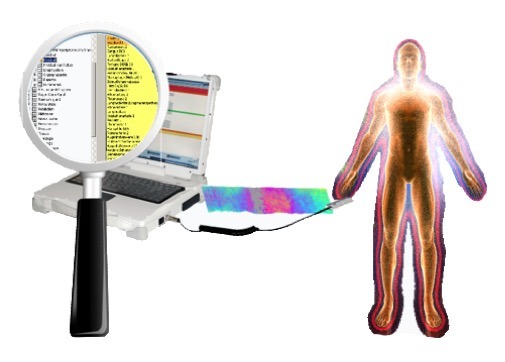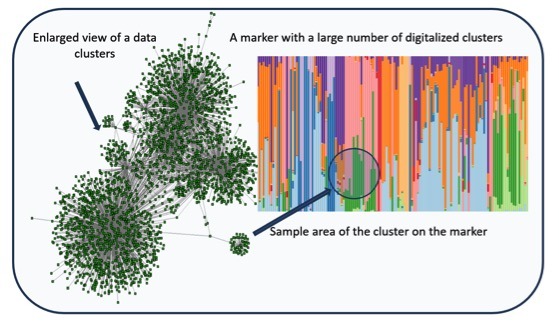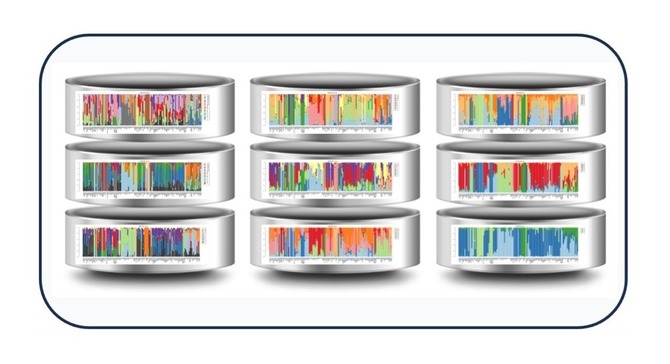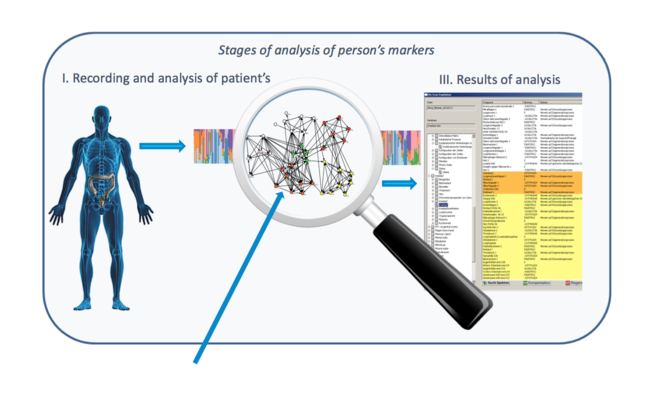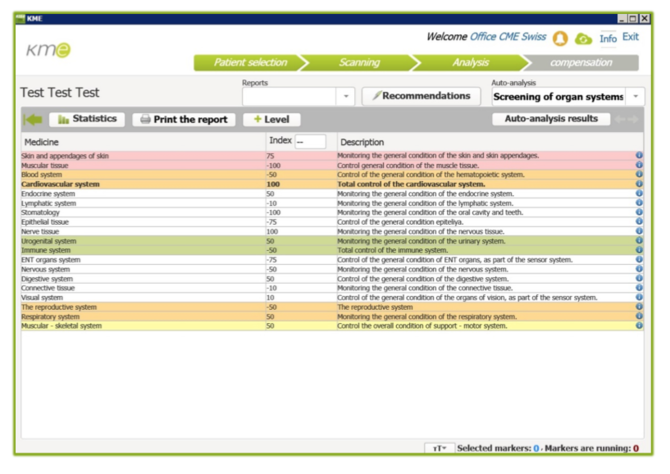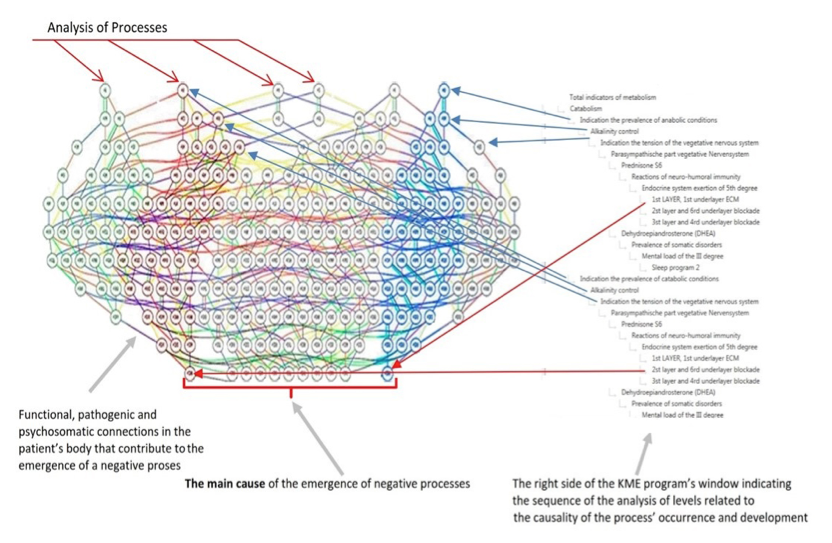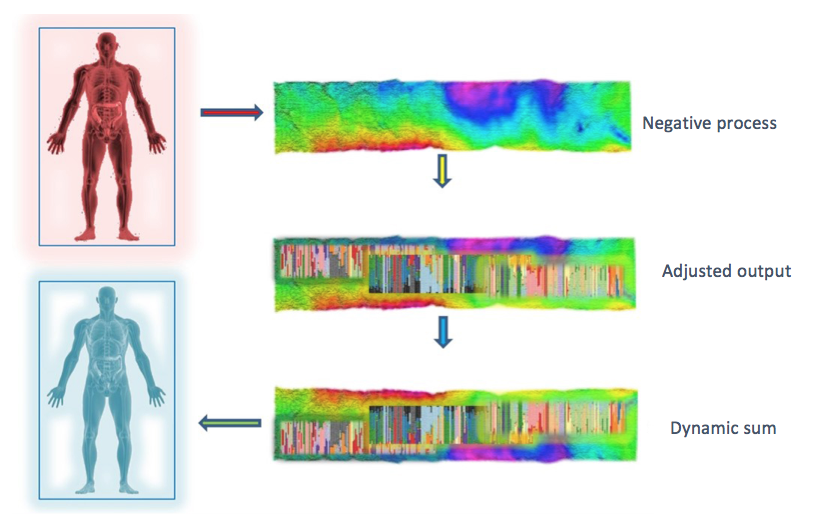Access to basic needs like food, safe water supply, housing, sanitation and health services influences the health status of a population. Other important factor influencing the quality of life is often overlooked. It is the individuality and unique needs of each person to maintain a healthy, productive and quality life. The evaluation of this subject needs plurality of strategies, which should be a part of continuous and comprehensive plan for healthier life style.
Analyzing background electric fields; observing repeatable patterns in seemingly chaotic processes. Understanding electricity of our own body
Without electricity, we wouldn't be reading this right now. And it's not because you would not see the pages due to the lack of light. It's because your brain wouldn't work.
Everything we do is controlled and enabled by electrical signals running through our bodies. As we learnt in intro physics, everything is made up of atoms, and atoms are made up of protons, neutrons and electrons. Protons have a positive charge, neutrons have a neutral charge, and electrons have a negative charge. When these charges are out of balance, an atom becomes either positively or negatively charged. The switch between one type of charge and the other allows electrons to flow from one atom to another. This flow of electrons, or a negative charge, is what we call electricity. Since our bodies are huge masses of atoms, we can generate electricity.
When we talk about the nervous system sending "signals" to the brain, or the brain telling our hands to contract around a door handle, what we're talking about is electricity carrying messages between point A and point B. It's sort of like the digital cable signal carrying 1s and 0s that deliver "Law & Order." Except in our bodies, electrons aren't flowing along a wire; instead, an electrical charge is jumping from one cell to the next until it reaches its destination.
Electricity is a key to survival. Electrical signals are fast. They allow for a nearly instantaneous response to control messages. If our bodies relied entirely on, say, the movement of chemicals to tell our hearts to speed up when something is chasing us, we probably would've died out a long time ago.
Development of the physico-mathematical medicine. Historical research into energy medicine.
Healthcare devices based on the energy/electrical readings of the body
Energy medicine is one of the major categories of complementary and alternative medicine (CAM). These therapies typically involve low-level energy field interactions.
One possible influence of biofield phenomena is that they may act directly on molecular structures, changing the conformation of molecules in functionally significant ways. Another influence is that they may transfer bioinformation carried by very small energy signals interacting directly with the energy fields of life, which is more recently known as the biofield.
Moreover, another mystery is that living organisms respond to extremely low-level nonionizing electromagnetic fields, displaying a variety of effects ranging from cellular and subcellular scales to the level of brain, emotions, and behavior. These fields may be beneficial (therapeutic), deleterious (electromagnetic pollution), or neutral. Then, the mystery of embryonic development from the fertilized egg to an organized integral unit should be considered, which may also involve innate energy fields, starting with the initial polarization of the fertilized egg.
Although these phenomena involve an integral and dynamic wholeness that challenge the power of molecular explanation, another biophysical view of life has been offered that may help explain them. Living systems may be regarded as complex, nonlinear, dynamic, self-organizing systems of energetic and field phenomena. At the highest level of organization, each life form may possess an innate biologic field, or biofield, a complex, dynamic, weak energy field involved in maintaining the integrity of the whole organism, regulating its physiologic and biochemical responses, and integral to development, healing, and regeneration.
Indigenous systems of healing such as Ayurvedic and Chinese medicine and modern modalities such as chiropractic rest on concepts of a vital force or subtle life energy that is central to healing. Called by many names, including prana in Ayurvedic medicine and qi in Chinese medicine, these indigenous terms go back thousands of years.
They may actually refer to something similar to the present-day concept of the biofield, which is, at least in part, based on the electromagnetic field theory of modern physics but, in principle, might also include acoustic and possibly other subtler energy fields not yet known to science.
Magnetic and Electric Fields in Life
Unlike the electric field, the magnetic field is not fundamental, That is, the concept of a magnetic force is not a separate force, but arises directly from the electric force.
This is an important factor for understand, why in the ERI system principle of dynamic analysis of the background electric field (not magnetic) is implemented.
Electrical currents, along with their associated magnetic fields, can be found in the body (Becker and Selden, 1985). The electrical and magnetic fields of the human body are complex and dynamic and are associated with dynamical processes such as heart and brain function, blood and lymph flow, ion transport across cell membranes, and many other biologic processes on many different scales. These phenomena all contribute various field components to the biofield.
In addition, a broad spectrum of radiant energies exists known as electromagnetic waves, ranging from the ultra-low, extremely low, very-low, low, and medium broadcast waves; very high – frequency broadcast waves; microwaves; infrared rays; visible light rays; and even ultraviolet radiation, all emanating from the human body. The peak intensity of the electromagnetic radiation of the human biofield is in the infrared region of the electromagnetic spectrum, in the range of 4 to 20 microns in wavelength. The belief is that much of this emission, particularly in the infrared region, is from thermal effects associated with metabolism.
The fields of the human body may also be influenced by the fields of nearby organisms, the biosphere, and even the earth and cosmos, especially geocosmic rhythms.
The human biofield may carry novel information of diagnostic and predictive value for medicine.
Thus CME Swiss AG developed the ERI system which can record the human biofield, its dynamic tendencies and complexities. We can also analyze certain aspects of the biofield and observe its footprints via ERI technology.
By analyzing various aspects of the biofield, ERI system is able to recognize organ and tissue dysfunctions and suggest an appropriate remedy to eradicate them. The systems may also be able to use biofield analysis to predict whether the effect of a particular course of therapy will be effective or ineffective, depending on whether it improves or thwarts the biofield. This possibility is especially true for medical system ERI which, in principal, often evokes a shift in response by extremely small stimuli that harmoniously work with the human body’s natural dynamics to restore balance.
Conventional Measures of the Human Biofield Used in Science and Medicine
Some of the field emissions from the body are the basis of many technologies commonly used in clinical diagnosis and research. Thus a significant number of conventional medical tests already provide windows into the human biofield. It should be comfortable to accept the concept of ERI analysis.
Conventional science and medicine have long used the electrocardiogram (ECG) and the electroencephalogram (EEG) to assess physiologic function of heart and brain, respectively. The heart produces coherent contraction of numerous muscle cells, resulting in vigorous electrical activity. In fact, the heart makes the greatest contribution to the electromagnetic, as well as the acoustic, human biofield. The brain’s activity contributes to a lesser extent to the biofield because its field emission is weaker than that of the heart. The ECG was first developed in 1887 and records the electrical activity from different areas of the heart. The EEG was developed in 1875 and records electrical activity from the various brain regions by using multiple electrodes on the head.
During this course, no further effort to discuss these conventional measurements was made. Instead, we will focus on the ERI system advantages in recording, preserving and analyzing the human biofields, associated with a vital force important in self-healing. This methods represent frontier assessment and slowly entering the mainstream science or medicine.
As we already know, all dynamic processes occurring in the human body are reflected in its background electric field. When the background electric field is in a harmonious, stable condition, it can be compared with the assembled jigsaw puzzle. When the background field is in imbalance, it can be compared with the absence or improper location of puzzle pieces. The ERI system helps to find and fill in the missing links of the puzzle. This missing part may be a marker or group of markers from the database of the ERI system.
Based on the above mentioned research, CME Swiss AG developed a digital catalogue of the spectral markers recorded from electric fields emitted by numerous objects and processes. These etalon markers are used in the ERI system for comparative evaluations. This evaluation can be compared with the process of selecting the optimally suited jigsaw puzzle links.
The ERI system holds a data base of tens of thousands of Markers
During the evaluation, an object’s micro-electric emission spectra are compared to ERI’s existing data base, thus finding mutual similarities between object’s spectra and previously recognized and recorded processes. It takes around a minute to obtain a report of spectra analysis and see it on the screen of the ERI system. In this report ERI operator could see a comprehensive list of past, present, and possibly future health processes such as organ functions, vitamin and mineral deficiencies, inflammations, viruses, parasites, bacteria, allergens, toxins, etc. In some cases, this report makes it possible to find a source and a cause of a particular illness or a health problem. The ERI system operator uses the system to make valuable recommendations or recommends an optimal solution to existing health problem.
In physics and optics, the Fraunhofer lines are a set of spectral lines named for the German physicist Joseph von Fraunhofer (1787--1826). The lines were originally observed as dark features in the optical spectrum of the Sun.
The English chemist William Hyde Wollaston was in 1802 the first person to note the appearance of a number of dark features in the solar spectrum. In 1814, Fraunhofer independently rediscovered the lines and began a systematic study and careful measurement of the wavelength of these features. In all, he mapped over 570 lines, and designated the principal features with the letters A through K, and weaker lines with other letters.
It was later discovered by inventors of spectroscope Georg Kirchoff and Robert Wilhelm Bunsen that each chemical element was associated with a set of spectral lines.
Emission spectroscopy uses the range of micro-electric waves radiated by object’s such as molecules, atoms, and subatomic particles. Micro-electric emission can be from a variety of sources, including chemical reactions. Emission spectroscopy analyzes certain atomic nuclei to determine different local environments of hydrogen, carbon, or other atoms in the molecule of an organic compound or other compound. This is used to help determine the structure of the compound.
ERI system analyzes certain physical properties by recording the tension and the change of the scattered electric field that an object scatters at certain wavelengths.
Then it transforms an incoming time-domain emissions into a spectra sequence.
The ERI systems use the Wavelet Transform (WT) a mathematical process that transforms a waveform into the components of its digital spectrum. As a result, an advanced computer program computes such transforms in real time and allows for data analysis with great accuracy. Such spectral analysis have become an important scientific tool for analyzing complex biochemical processes.
Understanding the functions of organs and systems and how they work together
Your body systems work together to keep you alive. Each of these systems is made up of organs with specific functions. The structure of these organs and the cells of which they are made make them well suited to their function. An important function of your body systems is to supply your cells with energy and nutrients, and to remove wastes that are produced.
One of the leading biometrics fields that characterize the human condition and the processes taking place in the body, is an electric field.
Electric field, as one of the components of the electromagnetic field, gives the most complete display of the actual dynamic of processes and their change over time. This is due to the fact that all the changes in the dynamics of the electric field take place almost instantaneously.
The electric field of a substance consists of the sum of individual fields of atoms and molecules of the substance whose field is being analyzed. In this way what is being analyzed is the dynamics of the substance.
Visual representation of the electric field of chemical elements
The electric field of a process consists of the electric fields of the substances participating
in the process. And, correspondingly, the dynamics of the process is analyzed.
Electric field of a cell recorded by an electronic microscope
Because of the Infinitely large number of substances and processes taking place in the human body as well as in its habitat, the surrounding world, all these processes, in their totality, are of stochastic, noise-like nature. In this way all the processes taking place inside us and in the surrounding world, form the background noise-like electric field.
Direct analysis of the noise-like, stochastic processes is not possible because of the high degree of uncertainty characteristic of the dynamics of these processes.
That is the reason why the method of digital transformation of the natural, background noise electric field into its digital multidimensional model has been used in the ERI system.
The software application which is an integral part of the ERI system, carries out the spectral dynamic analysis of the obtained digital model, enabling its user to determine the actual health condition of the patient to a high degree of probability.
Visual example of analog-digital transformation of stochastic characteristic into its digital model
Analog characteristics of the natural electric field are being mathematically transformed to a digital multi-dimensional vector model.
Before recording the patient’s characteristics, system operator conducts 3 seconds calibration of the system by recording the characteristic of the ambience of the place of meeting such as practitioner’s office. The recorded environmental characteristic parameters will be taken into consideration by the software application when conducting analysis.
While conducting investigation with the help of the ERI system, the sensor – electrode is wrapped in a dry disposable tissue paper, and placed on the person’s body. The ergonomic shape of the sensor is most convenient for taking it into a hand.
While recording the characteristics, the tissue paper ensures the hygiene of the procedure and absence of disturbances in the recorded signal caused by the “galvanic muscle electricity¨ and the conductivity of the skin.
The time taken for recording the person’s characteristics is 30 seconds.
The calculation and filtering of the environmental characteristics takes about 5 – 10 seconds.
In this way, by conducting the analysis of the person’s characteristic the ERI operator receives the information to evaluate the desired parameters.
Visual example of analysis of the stochastic field characteristic by the software application.
Visual example of the stochastic characteristic of person’s electric field that is recorded by ERI sensor
Visual example of obtaining digital coefficients of the model of stochastic characteristic of the electric field of the patient for the subsequent analysis
The main distinguishing feature of the ERI system as compared to other types of medical systems is that while recording the field characteristics and during their analysis the system does not emit anything and it does not affect the human organism in the negative way.
Information, obtained as a result of the preceding actions, is summarized by the software and spectral-dynamic marker of the current state of the person’s characteristics is created.
In order to obtain information about specific processes in his organism, conditions of organs and their systems, diseases and their causes, the patient’s marker is compared with average statistical markers, similar in format, of these conditions included in the data base of the system
ERI is the first representative of passive medical equipment based not on measurements but on the recognition of the degree of similarity (using the principle of comparative analysis) of the spectral-dynamic markers.
Spectral dynamic marker consists of several data clusters corresponding to the dynamic processes of any level of complexity
Spectral dynamic markers:
represent body systems, organs, their cells, physiological and pathological processes, diseases occuring in human organism, pathogens-fungi, viruses, bacteria, physiological conditions, etc., have been created by the ERI specialists in the company’s laboratory.
These markers have the average statistical characteristics of specific processes.
The created markers are then entered into the database of the ERI system and are used to conduct the analysis by the ERI system operator.
The dominant method is a method of analyzing the dynamics and interactions of the processes that contribute to the emergence and development of pathogenic processes and diseases.
This method allows consideration of any given process to become the focus of analysis by taking it into the "dominant" (+level).
Any of the processes in the causal chain, can also be opened in the next "dominant" (+level), and then considered for its own chain of causality.
The resulting analysis of the processes interaction may determine the causes of the emergence in both actual pathological processes, and the main causes of changes in the general health condition.
We know that the human body or any biological system (animals, plants and others) is an adaptive, self-regulating system with a multitude of different factors. Pathology is the factor that disturbs the balance in this system (which is causing imbalance).
Accordingly, our adaptive system reacts to all these disturbing factors in the pursuit to return the system to the state of balance.
As a result of this reaction, we get the external characteristics of a particular disease, such as fever and pain (as signaling factors in critical changes of the organ’s condition), etc.
Effect of the Compensation on a pathology in the body changes the balance between the activity of the pathology and the immune response of the body. This targeting with the help of choosing the "optimal approach“ is a compensatory adjustment. A user of the ERI system can achieve the desired results, by helping to eliminate not the symptoms, but rather the causes of their occurrence.



